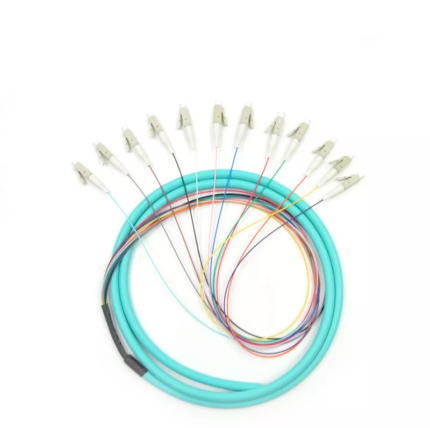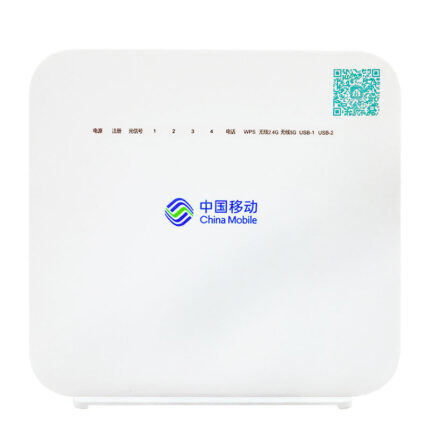G652D Drop Optic Cable Description:
G652D Drop Optic Cable is a type of optical fiber predominantly employed in telecommunications for long-distance data transmission. It features a single-mode operation, meaning it supports the transmission of a solitary ray of light, ensuring high bandwidth and minimal attenuation. With a core diameter of around 9 micrometers and a cladding diameter of approximately 125 micrometers, it effectively confines light within the core, preventing signal loss.
G652D offers low attenuation, maintaining signal strength over extended distances, and exhibits relatively low dispersion, facilitating uniform propagation speeds for different wavelengths of light. Optimized for operation at wavelengths of 1310 nm and 1550 nm, it ensures compatibility with existing networks and is commonly utilized for upgrading telecommunications infrastructure.
The term “G652D drop fiber optic cable” typically refers to a specific type of cable used in fiber-to-the-home (FTTH) or fiber-to-the-premises (FTTP) installations. Here’s a description of drop fiber optic cables:
- Design: G652D Drop Optic Cable are designed for the final link in the fiber optic network, connecting the main distribution network to individual homes, businesses, or buildings. They are often lightweight and flexible, making them easy to handle and install in various environments.
- Construction: These cables typically consist of one or more optical fibers enclosed in a protective jacket. The jacket material is chosen to provide durability and resistance to environmental factors such as UV radiation, moisture, and temperature fluctuations.
- Strength Member: Some drop cables may include a strength member, such as aramid yarns (e.g., Kevlar), to provide additional tensile strength and protect the fibers from stretching or damage during installation.
- Connectorization: Drop cables may come pre-connectorized with connectors such as SC, LC, or ST at one or both ends. This facilitates quick and easy installation, as the connectors can be plugged directly into optical network terminals (ONTs) or other termination points without the need for splicing.
- Installation: Drop fiber optic cables are typically installed aerially, buried underground, or run along building exteriors to reach the subscriber’s premises. They may be deployed using various installation methods, including overhead suspension, direct burial, or conduit placement, depending on local regulations and environmental conditions.
- Bend Radius: Drop cables are often designed to have a small bending radius, allowing them to navigate tight corners and bends without signal loss or damage to the fibers. This flexibility is crucial for routing the cable through conduits, around corners, and into tight spaces during installation.
- Performance: Drop fiber optic cables are engineered to meet industry standards for optical performance, including low attenuation, high bandwidth, and low signal loss. They ensure reliable transmission of high-speed data, voice, and video signals from the service provider’s network to the subscriber’s premises.

Features:
G652D is a specific type of optical fiber, primarily used in telecommunications for transmitting data over long distances. Here are some of its key features:
- Mode: G652D is a single-mode fiber, meaning it supports the transmission of a single mode or ray of light. This allows for high bandwidth and low attenuation, making it ideal for long-distance communication.
- Core Diameter: The core diameter of G652D fiber is typically around 9 micrometers. This small core size helps maintain signal integrity over long distances by minimizing dispersion.
- Cladding Diameter: The cladding diameter is usually around 125 micrometers. The cladding serves to confine the light within the core, preventing signal loss through leakage.
- Attenuation: G652D fiber offers low attenuation, meaning that the signal strength remains relatively high even after traveling long distances. This is crucial for maintaining the integrity of the transmitted data.
- Dispersion: It has relatively low dispersion characteristics, which means that different wavelengths of light propagate through the fiber at similar speeds, reducing signal distortion.
- Operating Wavelength: G652D fiber is optimized for operation in the 1310 nm and 1550 nm wavelength windows, which are commonly used in telecommunications networks.
- Compatibility: It is backward compatible with older generations of optical fibers, making it suitable for upgrading existing networks.
Applications of G652D Drop Optic Cable:
Drop fiber optic cables serve various applications primarily focused on extending high-speed internet access and advanced communication services to individual users and premises. Here are some common applications:
- Fiber-to-the-Home (FTTH): G652D Drop Optic Cable are extensively used in FTTH deployments, where they connect the optical network terminal (ONT) installed inside a subscriber’s home or building to the service provider’s fiber optic network. They enable the delivery of ultra-fast broadband internet, digital television, voice over IP (VoIP), and other multimedia services directly to residential users.
- Fiber-to-the-Business (FTTB): In FTTB installations, drop fiber optic cables connect commercial buildings, offices, and businesses to the service provider’s fiber optic infrastructure. They support high-speed internet access, cloud computing, video conferencing, and other business-critical applications, enhancing productivity and efficiency in corporate environments.
- Multi-Dwelling Units (MDUs): Drop fiber optic cables are deployed in apartment buildings, condominiums, and gated communities to provide fiber optic connectivity to multiple residential units within the same building or complex. They enable residents to access high-speed internet, digital TV, and other broadband services independently, enhancing quality of life and property value.
- Remote Areas and Rural Communities: Drop fiber optic cables are used to bridge the digital divide and extend broadband access to remote areas and underserved rural communities. They enable residents in rural regions to access high-speed internet, telemedicine, distance learning, and e-commerce services, unlocking economic opportunities and improving quality of life.
- Educational Institutions: Drop fiber optic cables are deployed in schools, colleges, and universities to provide high-speed internet access and networking infrastructure for students, faculty, and staff. They support online learning, research activities, digital libraries, and collaborative projects, enriching educational experiences and promoting knowledge sharing.
- Small and Medium-Sized Enterprises (SMEs): Drop fiber optic cables are utilized by small and medium-sized businesses to establish reliable and scalable communication networks. They enable SMEs to access cloud-based applications, hosted services, virtual private networks (VPNs), and unified communications platforms, enhancing connectivity and competitiveness in the marketplace.
- Smart Homes and Internet of Things (IoT): In smart home and IoT applications, drop fiber optic cables support the connectivity of smart devices, sensors, and appliances within residential environments. They enable homeowners to automate and control lighting, security, heating, and other systems remotely, improving energy efficiency, convenience, and security.
Specifications of G652D Drop Optic Cable:
| Specification | Description |
|---|---|
| Cable Type | Drop fiber optic cable |
| Fiber Count | Typically 1 to 4 fibers (can vary based on requirements) |
| Fiber Type | Single-mode (SM) or multimode (MM) |
| Fiber Diameter | Single-mode: 9/125 µm, Multimode: 50/125 µm or 62.5/125 µm |
| Jacket Material | Polyethylene (PE), Low Smoke Zero Halogen (LSZH), or other suitable material |
| Strength Member | Aramid yarns (e.g., Kevlar) or fiberglass reinforced plastic (FRP) |
| Connector Type | SC, LC, or other standard connector types |
| Cable Length | Customizable based on installation requirements |
| Operating Temperature | -40°C to +70°C |
| Installation Temperature | -20°C to +60°C |
| Bending Radius (Install) | ≥ 10 x Cable Diameter |
| Bending Radius (Operation) | ≥ 5 x Cable Diameter |
| Crush Resistance | ≥ 1000 N/100 mm |
| Tensile Strength | ≥ 500 N (short-term), ≥ 200 N (long-term) |
| Standards | Compliant with relevant industry standards (e.g., ITU-T, ANSI/TIA) |
| Applications | Fiber-to-the-home (FTTH), Fiber-to-the-business (FTTB), MDUs, Rural Connectivity, Smart Homes, IoT, etc. |



























